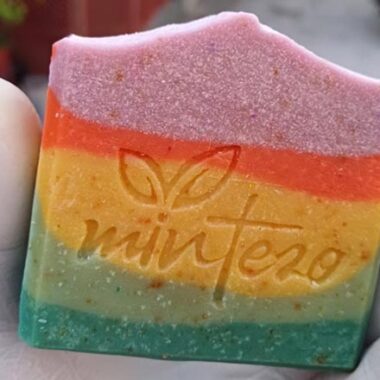Cold process soap is one of the most loved and traditional ways of making natural soap. But if you’re new to the world of handmade skincare, it’s natural to have questions. Is it safe? What makes it different? How long does it last?
In this blog, we’ll answer the most frequently asked questions about cold process soap, so you can feel confident choosing it for your skin and lifestyle.
❓1. What is Cold Process Soap?
Cold process soap is a handmade soap created by mixing natural oils or butters with sodium hydroxide (lye). The mixture undergoes a chemical reaction called saponification, turning it into soap — no heat required.
This method retains natural glycerin and allows for maximum customization of scent, color, and skin benefits.
❓2. Is Cold Process Soap Safe?
Yes! While sodium hydroxide (lye) is caustic in its raw form, it is completely neutralized during saponification. By the time the soap is cured (after 4–6 weeks), there is no lye left in the final bar.
Properly made cold process soap is gentle, natural, and safe for all skin types.
❓3. Why Is Cold Process Soap Better Than Commercial Soap?
Here’s why cold process soap is a better option:
-
Natural ingredients with no harsh chemicals
-
Glycerin-rich — keeps skin moisturized
-
Eco-friendly and often plastic-free
-
Customizable for skin needs (oily, dry, sensitive, etc.)
-
Handmade in small batches with love
Commercial soaps often contain detergents, preservatives, and synthetic fragrances that can dry out or irritate skin.
❓4. How Long Does Cold Process Soap Last?
Cold process soap typically lasts 3–6 weeks of daily use, depending on:
-
The size of the bar
-
Ingredients used (some oils make harder, longer-lasting bars)
-
How it’s stored
🧼 Tip: Let the soap dry between uses and keep it on a draining soap dish to extend its life.
❓5. Does Cold Process Soap Work for Sensitive Skin?
Yes! One of the biggest benefits of cold process soap is its ability to be tailored to sensitive skin. Soaps made with ingredients like:
-
Oatmeal
-
Calendula
-
Shea butter
-
Chamomile
-
Unscented oils
…can be extremely soothing and gentle. Always check the ingredient list or ask the maker for recommendations.
❓6. Why Does Cold Process Soap Need to Cure?
After the soap is poured into molds and cut into bars, it must cure for 4–6 weeks. This allows:
-
Excess water to evaporate
-
The bar to harden (so it lasts longer)
-
The pH to balance (making it milder)
Curing is essential for producing high-quality, long-lasting soap.
❓7. Can Cold Process Soap Be Used on the Face?
Absolutely — many cold process soaps are formulated for facial use. Look for bars made with:
-
Gentle oils like olive, almond, or avocado
-
Essential oils like tea tree or lavender (great for acne or irritation)
-
Clay or charcoal (to detoxify and control oil)
Always patch-test first if you have extremely sensitive or allergy-prone skin.
❓8. What Is Glycerin, and Why Is It Important?
Glycerin is a natural byproduct of the saponification process. It’s a humectant, meaning it attracts moisture to your skin. Unlike commercial soaps that remove glycerin to use in expensive lotions, cold process soap retains it, making your skin feel soft and hydrated.
❓9. Can Children or Babies Use Cold Process Soap?
Yes — but always choose mild, unscented or lightly scented options with gentle oils. Look for labels like:
-
“Unscented Baby Soap”
-
“Sensitive Skin Formula”
-
With calendula, chamomile, or goat’s milk
❓10. Why Do Some Natural Soaps Look Different from Each Other?
Because each batch is handmade! Natural soaps can vary in:
-
Color (depending on herbs, clays, or natural pigments)
-
Scent strength
-
Texture (some bars have flowers or exfoliants)
This uniqueness is part of the beauty and authenticity of cold process soap.
🌼 Final Thoughts
Cold process soap is more than just a cleanser — it’s a return to natural living. With skin-loving ingredients, handcrafted care, and eco-friendly values, it’s no wonder more people are making the switch.
Whether you’re curious about ingredients, safety, or benefits, we hope this FAQ gave you the clarity to choose what’s best for your skin.



